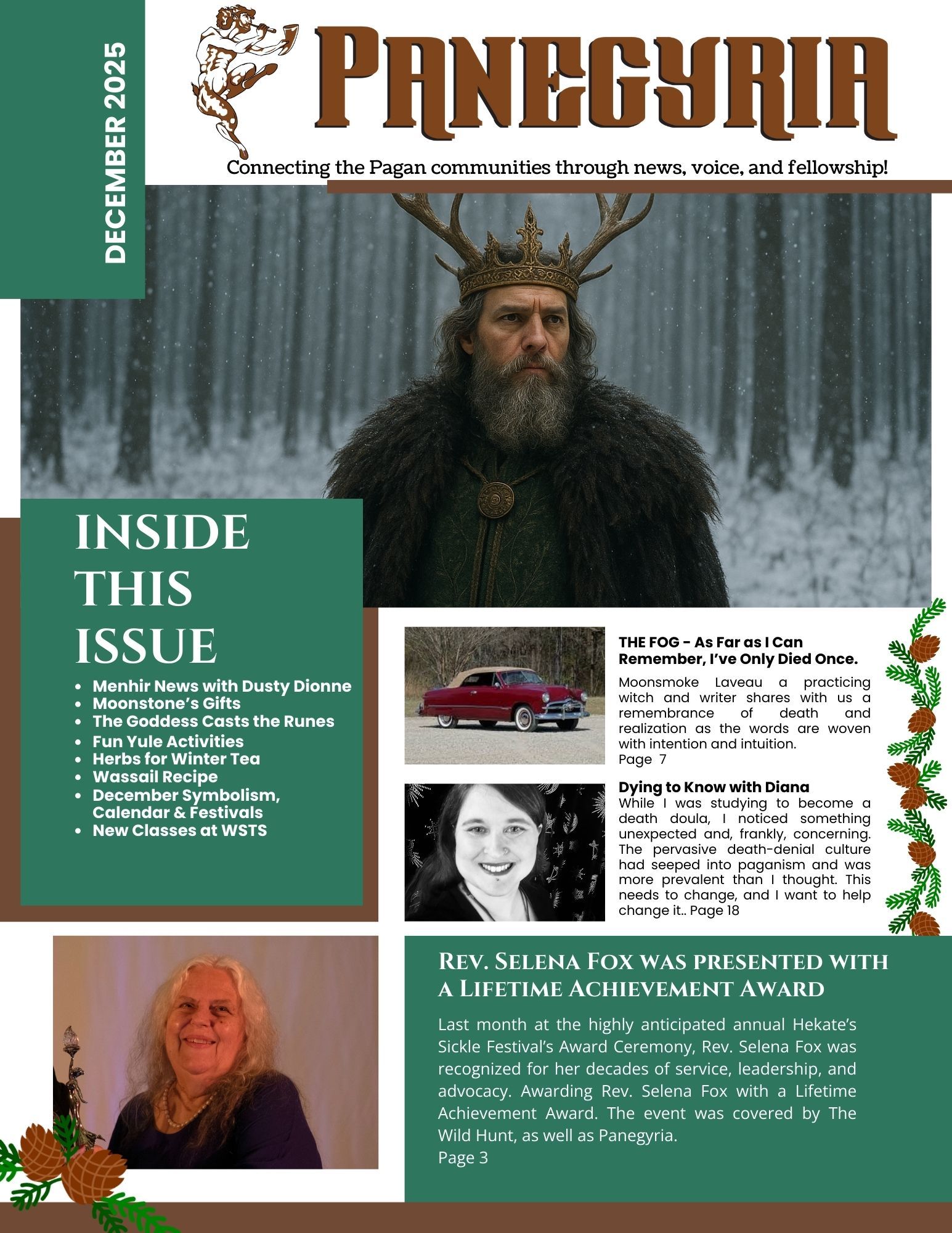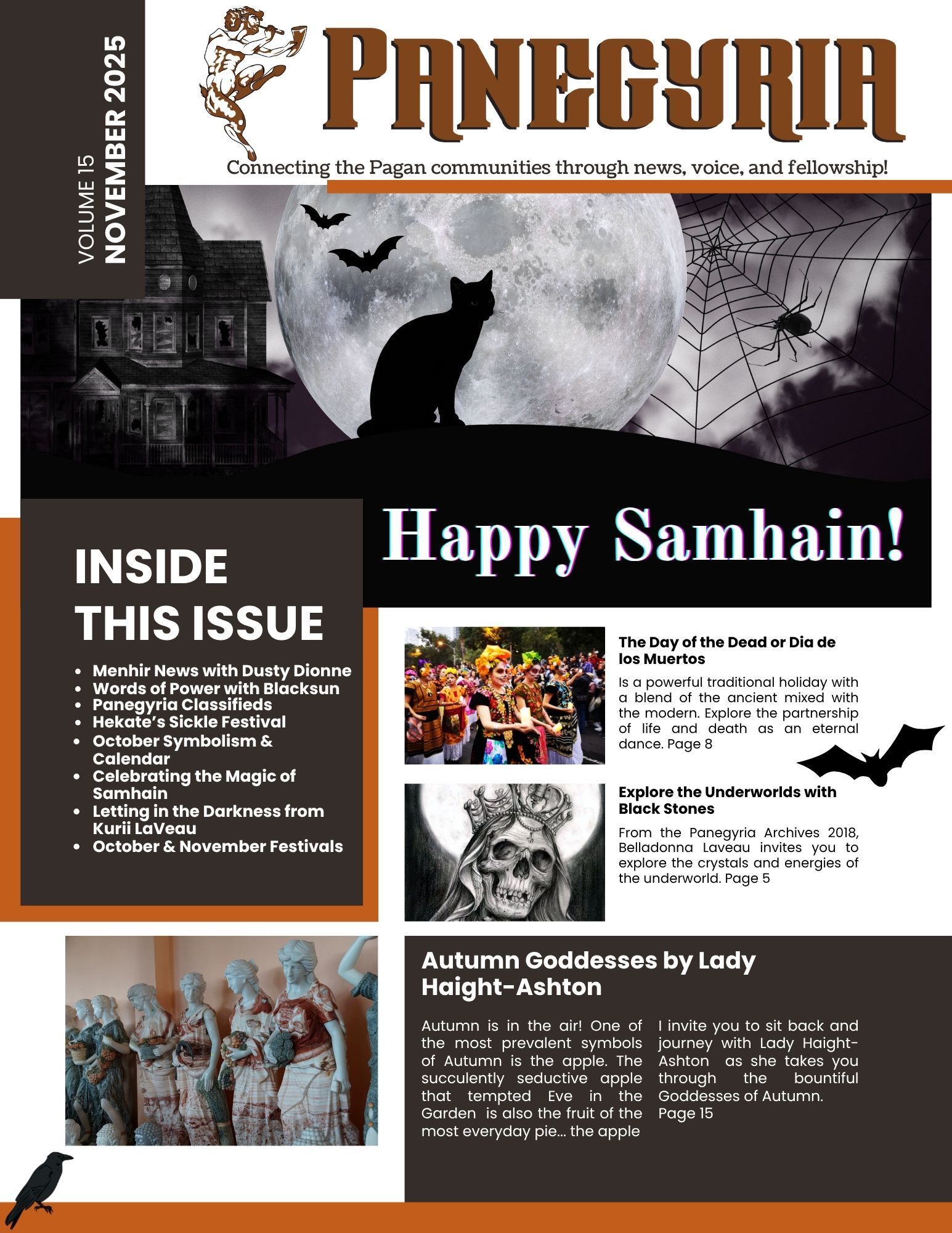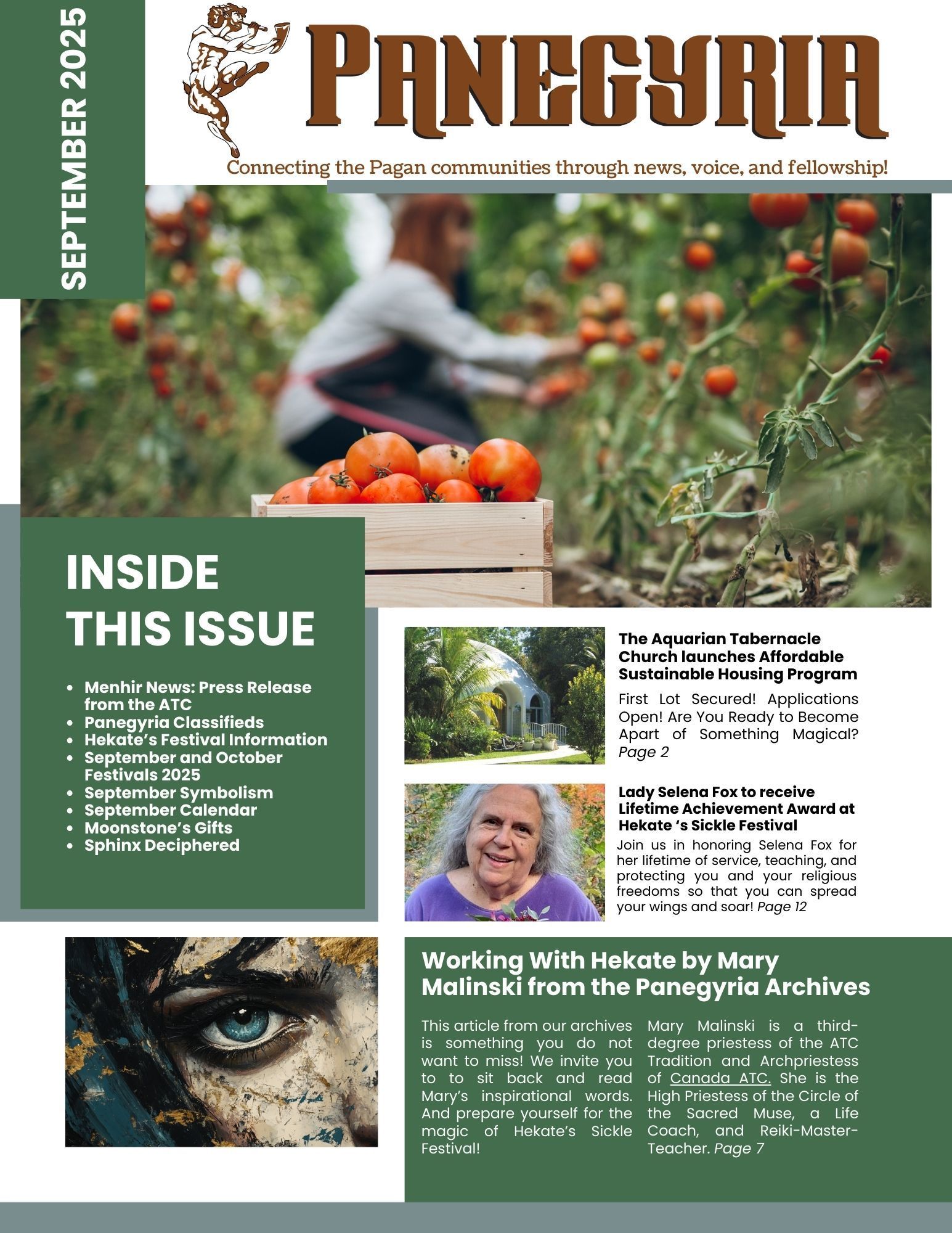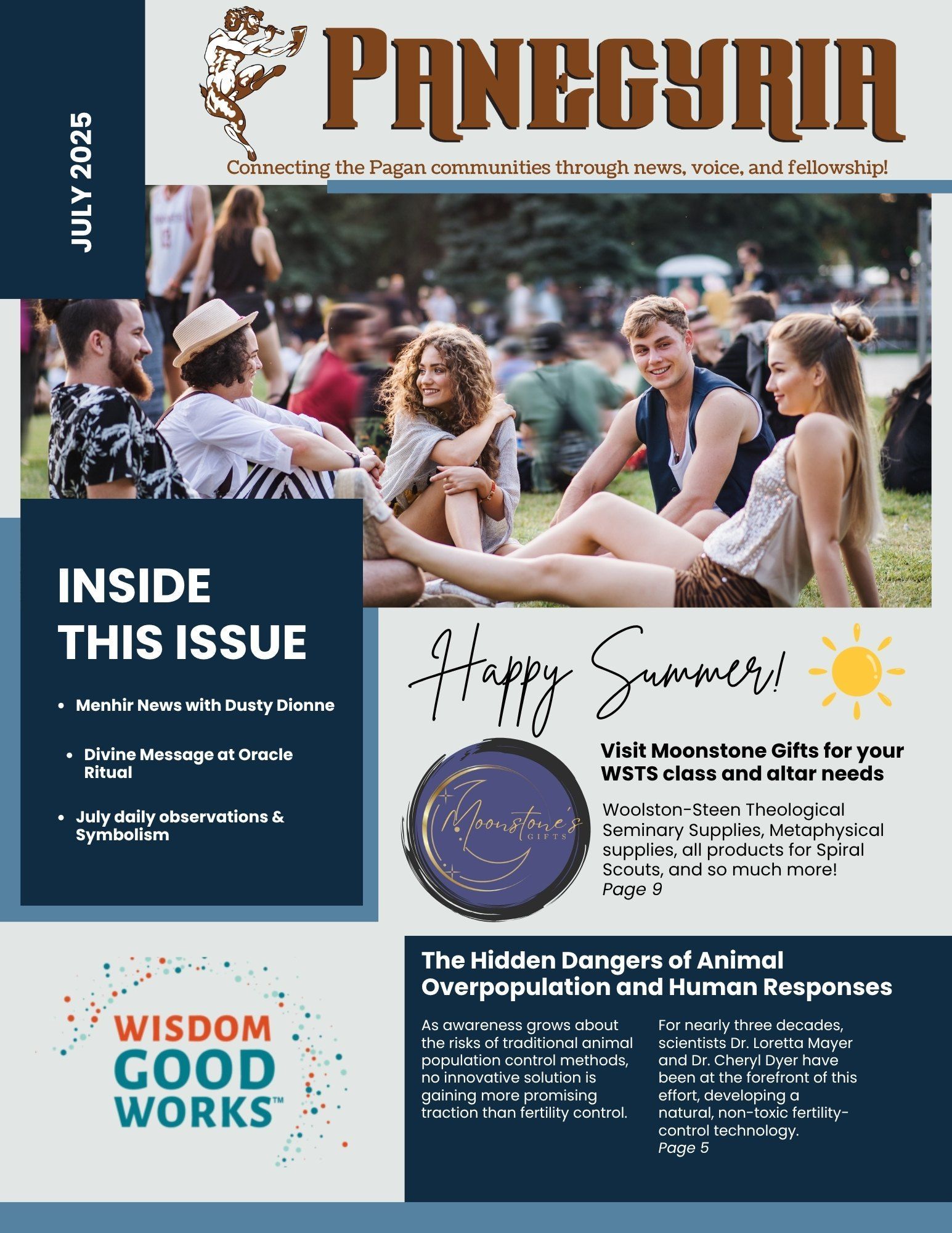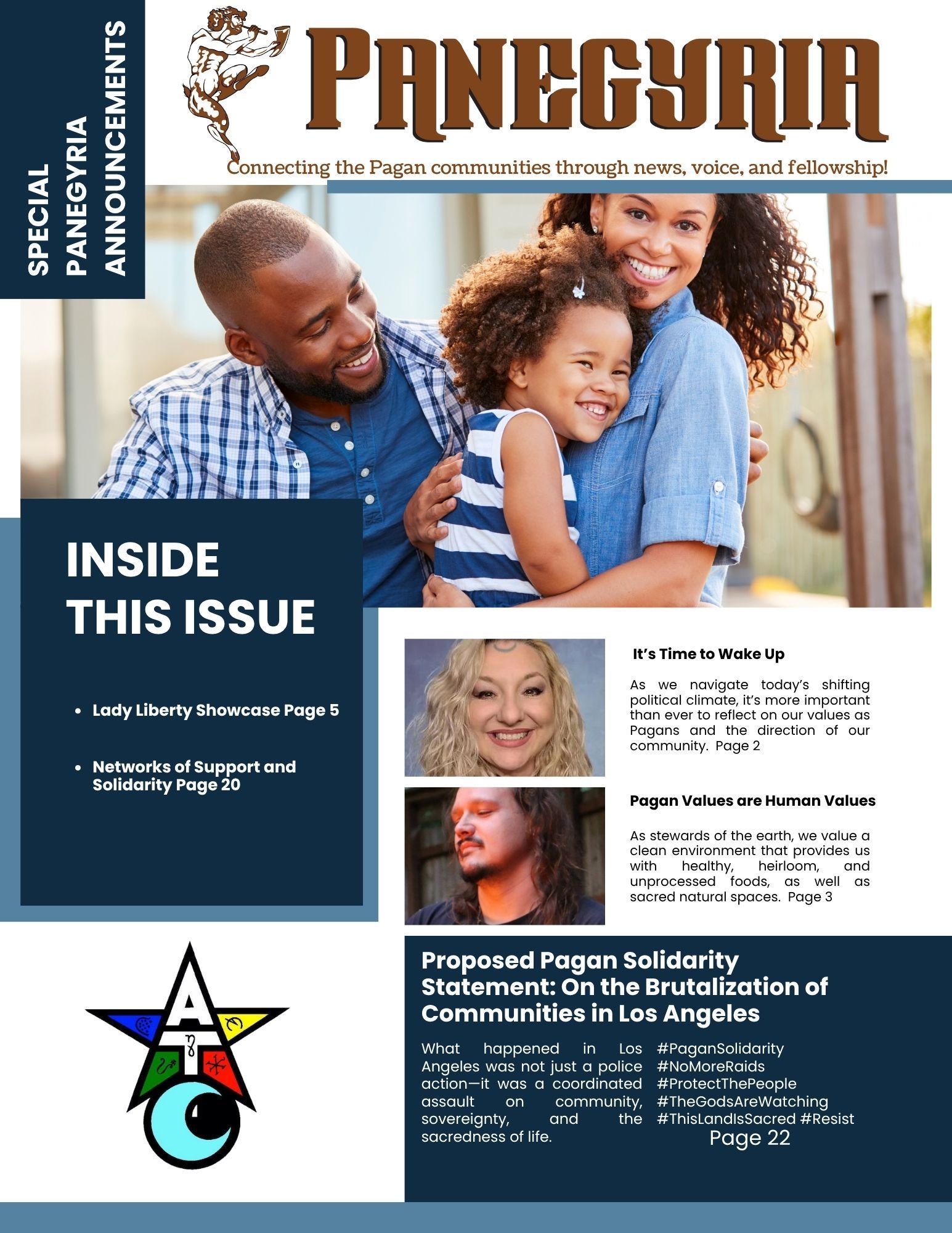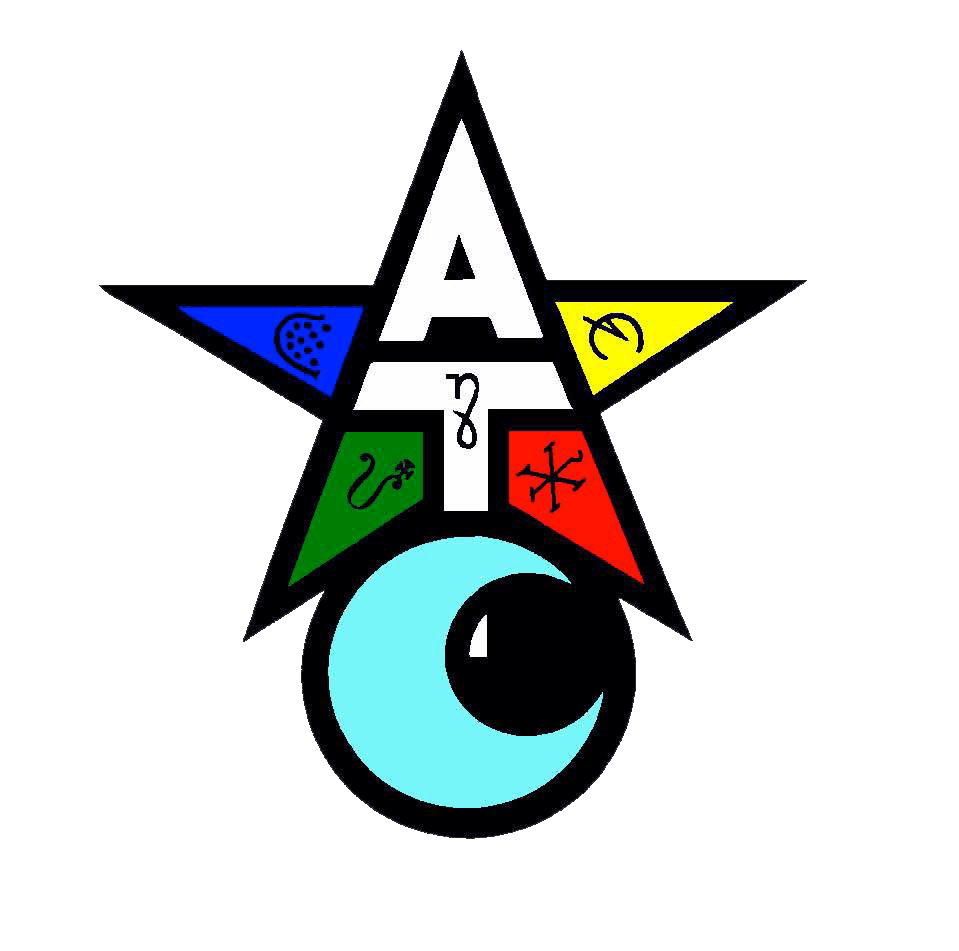History of The May Pole
Rt. Reverend Kara D. Williams • September 1, 2021
Wicca and The May Pole
The May Pole, once a mainstay of Wiccan celebrations at Beltane has become controversial in the United States community as people reassess gender roles and sexuality. For many groups, it has simply been easier to discontinue the use of the May Pole, also called a summer pole or summer tree, than to unwind its history and purpose and consider how it fits as Wicca develops and grows. Unwinding its history is the first step in this process. Folk lore and traditions commonly have an influence on religious practices (James 1962), and it behooves Wiccans to understand how that plays out in our own religion.
The May Pole ritual as handed down by Gardnerian Wicca is performed in a similar fashion to public May Pole dances from the late 1800’s. At the time Wicca was being developed, the May Pole dance was beginning to fade and had fallen out of use in many places by WW II (Parry 1986) but was fondly remembered as a children’s dance from the turn of the century. It would be revived in the early 1960’s. Wicca added a gendered aspect to the dance with women dancing in one direction and men in the other and a colored aspect to the ribbons reflecting the projective and receptive energies being woven along with the ribbons. The public dance with a long history that was interwoven with a freer sexuality, was structured and became what most Wiccans know today.
There is speculation as to where the concept of dancing around a tall pole (May Pole) celebration originated. India’s spring festival of Indradhvaja involves a pole and dancing has some of the same sacred sexual aspects (Anderson 1985). The ancient Roman festival of Floralia also involves the first of May and flowers and dancing, but I have yet to find documentation that supports the use of poles in that celebration. The Floralia Celebration seems much more connected to the British Isles since Rome ruled there. However, other aspects of the Indrahvaja spring festival do seem related to the Floralia celebration, so it is quite possible that there is a connection. The heiros gamos aspect of May Day, represented as the May Queen and May King, moved from India across the Mediterranean to continental Europe and the British Isles (Bray 1999). So, I do not rule out the idea that the Indra Pole also migrated from there.
The earliest reference to a May Pole in England is from the reign of King John (1167-1216) and simply mentions a charter was granted to erect one in preparation for the May Day celebration (Parry 1986). The earliest visual image of a May Pole that Parry found was from 1499 in a Book of Hours. There is a description from 1751 of a celebration held at Ranelagh that demonstrates that it was the other activities that got a bit wild. Masked guests, and the construction of green bowers for lovers, were much more the focus than the dancing around the base of the pole. The masked dancers in this description were all male! The written description of the engraving describes the pole as being garlanded, but the engraving shows short ribbons hanging from the top. There is controversy of how accurate the drawing was of the event due to the highly costumed nature of the guests that lends itself to fantasy and that the artist is Italian and was depicting what this might look like in Italy (Alford 1943). A letter that is believed to be describing the engraving was written by Walpole to his friend Horace Mann and states that 2,000 people attended this May Day celebration! (Alford 1943) Obviously with that many people the type of gendered pairing amongst dancers known in Wicca would be difficult and the bowers most necessary.
With the rise of Protestantism, the May Pole dance had fallen out of favor and many poles while still standing went unused. In 1644 after a long campaign by the Puritans May Poles were outlawed and ordered to be taken down and destroyed due to the wild and licentious activities that took place at those celebrations (Parry 1986). According to Nichols, the Puritans had long campaigned against the May Day celebrations due to the licentious nature of the celebration (https://www.sacred-texts.com/bos/bos194.htm). The May Pole dance was revived by Professor John Ruskin in 1889 (https://www.efdss.org/learning/resources/beginners-guides/37-english-folk-dance/2191-maypole). Though to be fair it had never completely died out (Parry 1986). It caught on with his student teachers and spread from there. This is important since many of the magical and occult communities at that time were developing the ideas and celebrations that Gerald Gardner would incorporate into Wicca.
While May Poles occurred all over Europe, the focus here is on the history of what was happening in England as that was Gerald Gardner’s greatest influence. Much of what is adopted into Wicca is not reflective of the traditions on the continent. However, the continent did influence the use of ribbons! In the late 1880’s ribbon dances were imported from Italy and became all the rage (Parry 1986). The Victorian school teachers added dancing with the ribbons to the May Pole dance and Wicca ends up with the tradition of ribbons. Poles during this time were often painted with barber shop spirals and decorated with streamers and garlands. Most of them were too tall for ribbon dances (Parry 1986).
Stevens in the article “The May Pole in Ireland” states that May Poles were brought from a Dutch sailing boat and that he found no reference to ribbons being used prior to 1900 in Ireland. This supports the other findings that ribbons are a late addition to the May Pole celebration.
Parry found that dances such as “Sallinger’s Round” and “Gathering Peascods,” common English folk dances, were often danced around the May Pole prior to the ribbons being added and the idea of weaving a pattern. These dances are done in circles and do not require partners so can be done with any combination of genders and ages.
While there is no doubt that sexuality and fertility were a part of these celebrations, they were not originally tied to the structured dance that we see today. Historians agree (Sachs 1937) that the original poles were living trees and that dancing around the tree was both attached to virginity in some places and not in others. The sex was taken off into the green bowers created around the area of celebration and was not ritualized as might be done today in Wiccan celebrations. “Greenwood Marriages” were how people referred to the night’s activities that might well result in a child (Farrar 1984). The community rules on behavior were relaxed and the celebrations from all accounts were wild and exuberant, but there is certainly evidence as seen in the engraving mentioned above that the dancing could also be only of one gender. What is positive is that there is not one way that a May Pole dance must be done! This gives modern practitioners wide latitude in how to incorporate a May Pole into their celebration.
In the US, many Wiccans are considering other ways of presenting this sacred sexual celebration that incorporates today's evolved understanding of both the history and the energetics of such a ritual. There can be a place for all genders at this celebration. Preserving the incredibly old sacred sexual rituals in a religion that celebrates fertility and sexual choice seems worth doing.
Rt. Reverend Kara D. Williams is a 3rd degree priestess in the WISE Tradition of Wicca and the dean of Woolston-Steen Theological Seminary.
Bibliography:
Alford, V. (1943). The Maypole: An Engraving of 1751. Journal of the English Folk Dance and Song Society, 4(4), 146-148. Retrieved August 20, 2021, from http://www.jstor.org/stable /4521202
Anderson, L. (1985). A Study of Indian Spring Festivals from Ancient and Medieval Texts (thesis).
Bray, D. (1999). Sacral Elements of Irish Kingship. Sydney; Sydney University Studies in Religion.
Farrar, J. and S. (1984). The Witches’ Bible: The Complete Witches Handbook. London: Robert Hale Ltd.
James, E. (1962). The Influence of Folklore on the History of Religion. Numen, 9(1), 1-16. doi:10.2307/3269410
Nichols, M. (n.d.). A Celebration of May Day. https://www.sacred-texts.com/bos/bos194.htm. Retrieved August 24, 2021.
Parry, C. (1986). 'The Maypole is up, now give me the cup...' Records of Early English Drama, 11(1), 7-9. Retrieved August 20, 2021, from http://www.jstor.org/stable/43505500
Sachs, C. (1963). World History of the Dance. New York: WW Norton & Company, Inc.
Stevens, R. (1951). The Maypole in Ireland. Journal of the English Folk Dance and Song Society, 6(3), 102-102. Retrieved August 20, 2021, from http://www.jstor.org/stable/4521365

